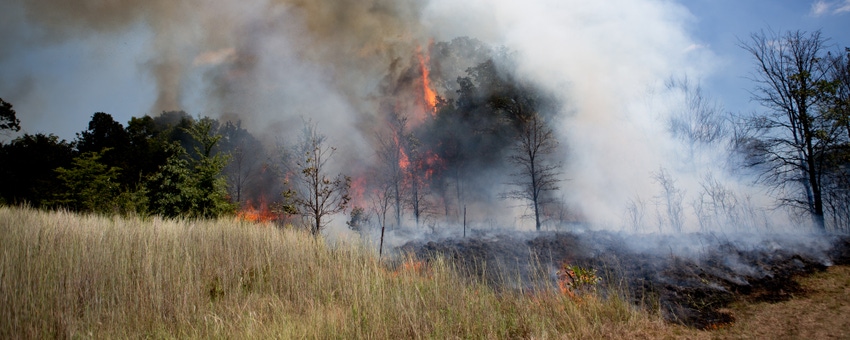Combining prescribed fire and grazing improves long-term pasture health.
July 6, 2018

By Rob Cook
Prescribed fire has long been used as an effective range management tool. And of course, correct grazing management is a time-proven tool to manage and improve pasture ecosystems.
But questions sometimes rise when considering both on the same pasture. Can prescribed fire be used along with livestock grazing? The short answer is yes.
Many land managers incorporate prescribed fires into a management plan alongside grazing livestock. Other land managers feel it is not feasible to graze and burn on the same operation. But when prescribed fire is used strategically, its benefits outweigh any negatives. In fact, the removal of fire in the Southern Great Plains over the last century has resulted in increased brush densities, which reduces forage production and grazeable acres.
Prescribed fire can be a relatively inexpensive tool to accomplish several management goals. However, fire must be used correctly to avoid poor results or negative impacts. It is just as important to have the correct stocking rate. Forage production must be matched with animal demand for a livestock grazing operation to be successful whether or not a prescribed fire plan is implemented.
Here are three considerations to help you decide if prescribed fire is for you.
1. Soil moisture at the time of a burn is the key to reducing risks from future drought.
One reason managers give for not using prescribed fire is the fear of a drought after the fire. While this is certainly a valid concern, we can take actions to mitigate the risks.
Burning during a drought might not be wise due to a higher probability of negative impacts on forage production and animal performance.
Although we can do some weather forecasting, we have no control over how much it will rain after a prescribed fire. We do have control over the conditions under which we burn, however.
Conducting a burn when soil moisture is good is the most effective way to reduce the effects of a dry spell after the burn. Soil moisture at the time of the burn is the most important factor affecting forage recovery after the fire.
2. Studies show that prescribed fire increases forage quality and does not reduce forage production.
Some grazing managers will not use prescribed fire because they believe it will reduce forage production and in some cases kill warm-season grasses such as little bluestem. However, a study published in the Journal of Rangeland Ecology & Management in 2011 showed that burning actually increased the above-ground regrowth and the below-ground biomass of little bluestem.
What’s more a study published in the Journal of Rangeland & Ecology Management in 2010 showed that dormant-season prescribed burns in shortgrass steppe had no negative effect on above-ground herbaceous production.
Both of these studies showed that there was no reduction in forage regrowth after a fire and that the regrowth was higher in quality. This could lead to an increase in animal performance. Both studies also suggested that grazing immediately after a prescribed fire would not cause long-term reductions in forage production and that a full growing season deferment after a prescribed burn is normally not justified.
Immediately after a fire, livestock will graze plants they normally would not. This helps not only to increase grazing distribution and utilization but also to amplify the fire’s effect on species composition. In addition, grazing impacts on brush regrowth have been shown to improve brush suppression.
3. Patch burning can be a good option for balancing grazing and fire.
Grazing managers can burn smaller areas within pastures as an alternative to burning entire pastures. This is sometimes referred to as patch burning.
Patch burning can help increase the compatibility of prescribed fire with livestock grazing. Research has shown that there is usually no reason to defer grazing after a fire. Burning small areas, or patches, within pastures on a rotation will lead to livestock concentrating in recently burned areas within individual pastures and not grazing unburned areas within the same pasture.
These patch burn rotations will allow for long periods of rest from grazing. Growing-season rest is an important practice to help improve grazing land health and will result in a large amount of standing forage in unburned areas. This forage becomes fuel for the next burn and is accumulated without the deferment of an entire pasture.
It can also be used as stockpiled forage for grazing during drought situations, when a prescribed fire might not be conducted. Burning only part of a pasture will ease concerns related to grazing management, allow for fuel accumulation and should also reduce the risk associated with drought after a prescribed fire.
Burning patches in the same pastures during different years will also lead to the patches having different levels of regrowth and recovery. This will increase the biodiversity of the pasture and result in an appearance that is not uniform. Some grazing managers might see this un-uniform appearance as messy, but others see it as a sign of biodiversity and a healthy ecosystem.
Cook is a pasture and range consultant with the Noble Research Institute
You May Also Like



